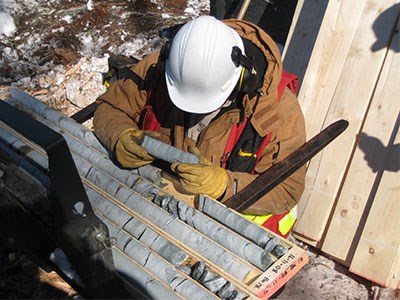A report entitled "Are Robots Coming for Our Jobs?" says northern Ontario is experiencing a decline in routine jobs and will be significantly transformed due to new technology.
In a news release, the think tank organization called the Northern Policy Institute, says the report examines the impact of automation on industries, jobs, income, income distribution, and communities in Northern Ontario.
Automation is the process of substituting machines or computers for human labour. Automation can be partial or complete. Partial automation is the automation of certain tasks within an occupation. Complete automation occurs when a new technology makes older technology and its associated capabilities obsolete.
Automation can result in increased productivity, income, and standard of living but new technologies could also accelerate the pace of change and bring unprecedented occupational disruption and unemployment, changing the nature of work and demand for skills.
it benefits some workers while putting others at risk.
The report, by Dr. Bakhtiar Moazzami, professor of Economics and Econometrics at Lakehead University, also mentions that substitution of jobs by robots raises a concern about the government’s ability to collect taxes.
“The majority of job losses to automation have been in occupations involving routine tasks such as retail salespersons and cashiers that required a lower level of education and skills. Employment in occupations involving non-routine cognitive tasks has indeed increased in all regions” said Moazzami.
The occupational and geographical impacts of automation on jobs vary from community to community but there are some key findings according to the Institute:
- Few occupations are projected to be fully automated, but many positions will be significantly transformed due to new technology
- In general, the share of employment in non-routine cognitive and analytical occupations in northern Ontario has increased while the share of routine cognitive and routine manual jobs has declined significantly
- 74 per cent of employment in northeastern Ontario and 76.2 per cent in northwestern Ontario are in sectors with relatively low potential for automation
- Approximately 32 per cent and 37 per cent of jobs in northeastern and northwestern Ontario respectively are in education, health care, and public administration, which have a very low potential for automation
The study also estimates the impact of automation on various occupations in Canada, identifying the following as the top five high-risk occupations:
1. Retail salespersons: 92 per cent probability of automation; more than 656,000 employees.
2. Administrative assistants: 96 per cent probability of automation; nearly 329,000 employees.
3. Food counter attendants and kitchen staff and kitchen helpers: 91.5 per cent probability of automation; nearly 313,000 employees.
4. Cashiers: 97 per cent probability of automation; 309,000 employees.
5. Transport truck drivers: 79 per cent probability of automation; nearly 262,000 employees.
Similarly, the bottom five low-risk occupations are:
1. Retail and wholesale trade managers: 20.5 per cent probability of automation; more than 363,000 employees.
2. Registered nurses (psychiatric included): 0.9 per cent probability of automation; more than 291,000 employees.
3. Elementary and kindergarten teachers: 0.4 per cent probability of automation; more than 271,000 employees.
4. Early childhood educators and assistants: 0.7 per cent probability of automation; nearly 188,000 employees.
5. Secondary school teachers: 0.8 per cent probability of automation; nearly 174,000 employees.
To read, Are Robots Coming for Our Jobs? The Economic Impact of Automation on Northern Ontario’s Economy click here.
